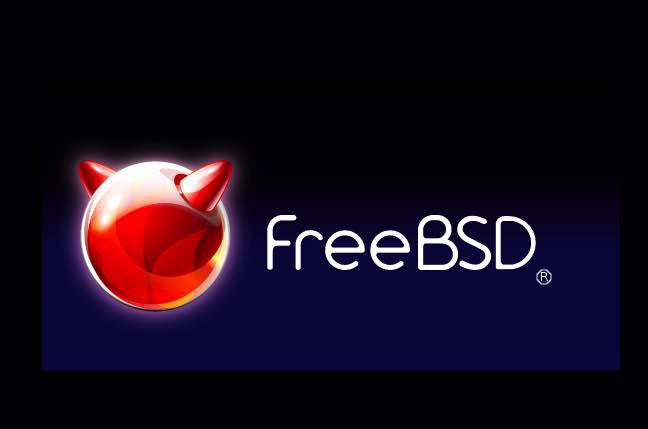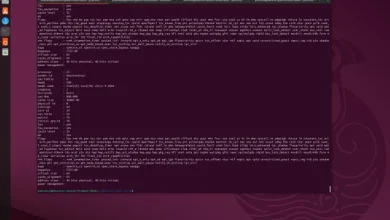He spoke with The Register about the project’s copyright philosophy, what the foundation does, and why it matters.
Let’s start with a little history of FreeBSD, where it sprang from, and its relationship with the earlier BSD distros.
FreeBSD traces its roots to the Computer Systems Research Group (CSRG) at UC Berkeley, where the Berkeley Software Distribution (BSD) was developed as a collaborative project at the university in the 1970s, helping shape the open source movement. In the early 1990s, BSD faced legal challenges, which Linus Torvalds later cited as a key reason for creating Linux. During this time, 386BSD emerged to bring BSD to Intel’s 80386 processors. FreeBSD was officially founded on June 19, 1993, as an evolution of 386BSD, prioritizing performance, stability, and an open development model.
During its early days, FreeBSD gained recognition not only for its technical excellence but also for its unique mascot – Beastie, the BSD daemon – famously refined with input from John Lasseter of Pixar fame.
From its Berkeley origins to today, FreeBSD has always been about creating software that anyone can use and learn from. As Dr Marshall Kirk McKusick, one of the earliest FreeBSD developers, puts it, “FreeBSD is ‘Copy-Center,’ not ‘Copy-Left’ – you can go down to the copy center and make as many copies as you like, for whatever purpose you like.” That philosophy remains just as true over 30 years later.
What also sets FreeBSD apart from similar open source projects is its ability to endure and innovate without a central figure leading it. By design, the governance structure constantly evolves to bring in fresh perspectives while maintaining stability and steady progress within the project itself. This was a project where someone like me, a young college kid, could immediately contribute, learn vital skills for my career, and eventually join the core team to help run the project. I started the FreeBSD Foundation in March of 2000, because I wanted to ensure the longevity of FreeBSD so it could provide those same opportunities to future generations. The foundation provides financial and legal backing, facilitates infrastructure improvements, and supports FreeBSD advocacy and development.
What have been FreeBSD’s biggest successes since then?
One of FreeBSD’s greatest successes has been its role as an enabler, providing a stable and high-performance foundation for countless products and innovations. Thanks to its permissive BSD license, companies and developers have been able to build upon FreeBSD without restrictive obligations, leading to its use in everything from PlayStation consoles to network infrastructure and cloud services. FreeBSD’s impact extends beyond direct adoption – it has provided the technological backbone for advancements in storage, security, and networking.
Security has been a key area of innovation, with features like Jails, which introduced lightweight OS-level virtualization long before Linux containers became mainstream, and Capsicum, a fine-grained capability-based security framework for modern application sandboxing. Additionally, CHERI (Capability Hardware Enhanced RISC Instructions) was developed on FreeBSD by researchers at the University of Cambridge, integrating hardware-backed memory safety to prevent vulnerabilities at the processor level.
Naturally, much of the attention around FreeBSD focuses on its technical innovation, with the FreeBSD Foundation quietly powering the stability and continuity that make that innovation possible. In addition to funding headline-grabbing projects like modern Wi-Fi support on laptops, the foundation handles the critical but less visible work: maintaining infrastructure, managing security disclosures, safeguarding trademarks, and protecting the community from legal and regulatory risks. These efforts ensure that FreeBSD remains a secure, high-quality platform. When time-sensitive or complex challenges – such as security audits or urgent bug fixes – arise beyond the capacity of volunteers, the foundation steps in to deliver. It’s this behind-the-scenes work that keeps FreeBSD resilient and trusted by developers and organizations worldwide.
What impact is FreeBSD having today?
FreeBSD continues to have a major impact, both as a complete operating system and through its widely used components. Its success is built on three key pillars: a permissive license, a self-renewing project structure, and highly reliable, technically advanced software. Because of this, FreeBSD is embedded in countless technologies – powering phones, games consoles, routers that handle most of the world’s internet traffic, and industrial control systems. Chances are, you’re using FreeBSD without even realizing it.
- Credible nerd says stop using atop, doesn’t say why, everyone panics
- Chimera Linux ghosts RISC-V because there’s no time for sluggish hardware
- Stuff a Pi-hole in your router because your browser is about to betray you
- Type-safe C-killer Delphi hits 30, but a replacement has risen
For example, Netflix relies on FreeBSD to optimize streaming performance, delivering high-quality video to millions with minimal latency – reaching speeds of up to 800 Gbps from a single server. Beyond entertainment, FreeBSD’s stability and advanced networking capabilities make it a preferred choice for critical infrastructure. NetApp, a global leader in data management, relies on FreeBSD as the foundation of its ONTAP software, which supports a wide range of industries – one exciting case study they highlight is the current work with the Aston Martin Formula 1 team. Further highlighting the Foundation’s key role in raising awareness, another billion-dollar company quietly building on FreeBSD is Beckhoff Automation. A closer look at their website reveals the story of how they’ve migrated from the aging Windows CE to FreeBSD for their platform. Heiko Wilke, Senior Product Manager at Beckhoff, said: “From the security aspect, an up-to-date operating system whose development is actively ongoing is indispensable.” These cases highlight FreeBSD’s versatility as a foundation for both mission-critical and high-performance applications.
And these are just a few examples. The FreeBSD Foundation is constantly uncovering new ways the operating system is being used and works to connect companies with the developer community to drive even more innovation. FreeBSD enables much of today’s technology because it provides a powerful, flexible platform – just like the original BSD created at the CSRG.
Is the FreeBSD programming community graying? If not, how has it avoided this problem?
While there is a strong core of experienced developers, FreeBSD continues to attract new and younger contributors. As a complete operating system – including both the kernel and userland – it serves as an excellent tool for learning how operating systems work. Through the FreeBSD Foundation’s internship partnership with the University of Waterloo and the development of education materials to help teach OS fundamentals, and the FreeBSD project’s 20 years of participation in Google Summer of Code, we are actively working to bring in new contributors.
The Sovereign Tech Fund, which focuses on investing in open digital infrastructure as foundations for the future, recently commissioned work through the foundation to drive improvements in infrastructure, security, regulatory compliance, and developer experience, with a focus on simplifying a user’s first contribution to the project.
Finally, FreeBSD’s project structure makes it easy for new contributors to find a niche and make an impact. Despite the industry-wide belief that systems programming is a solved problem, there is still important and exciting work to be done. FreeBSD provides an ideal environment for this kind of innovation. By balancing experience with fresh perspectives, FreeBSD and the FreeBSD Foundation ensure that the developer community remains dynamic and continuously evolving.






